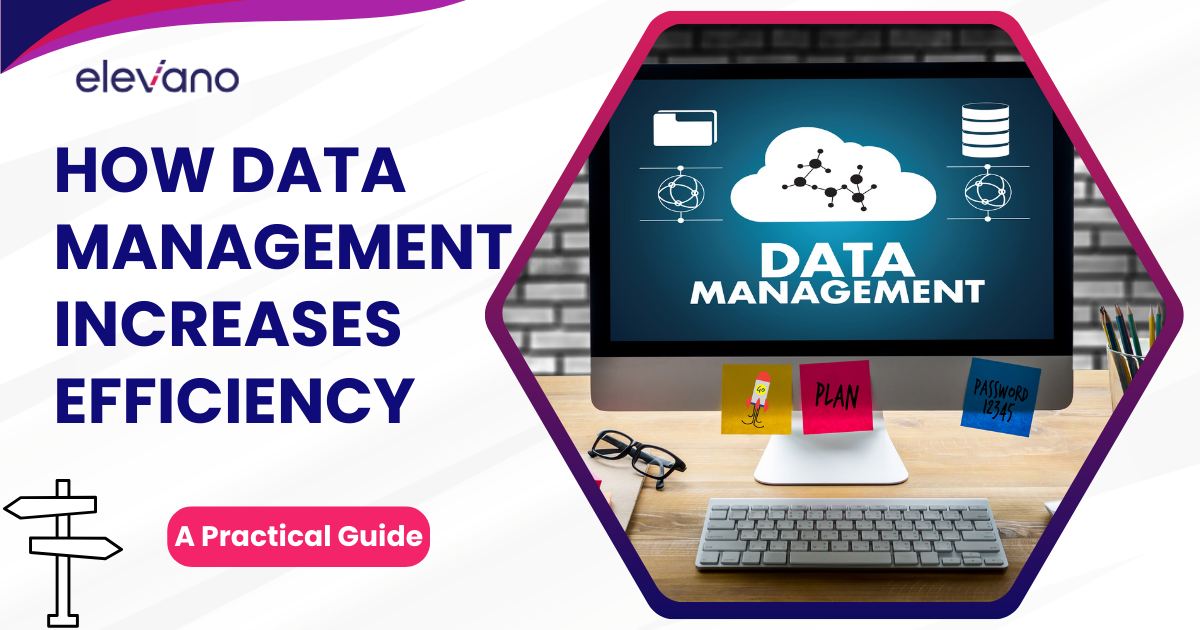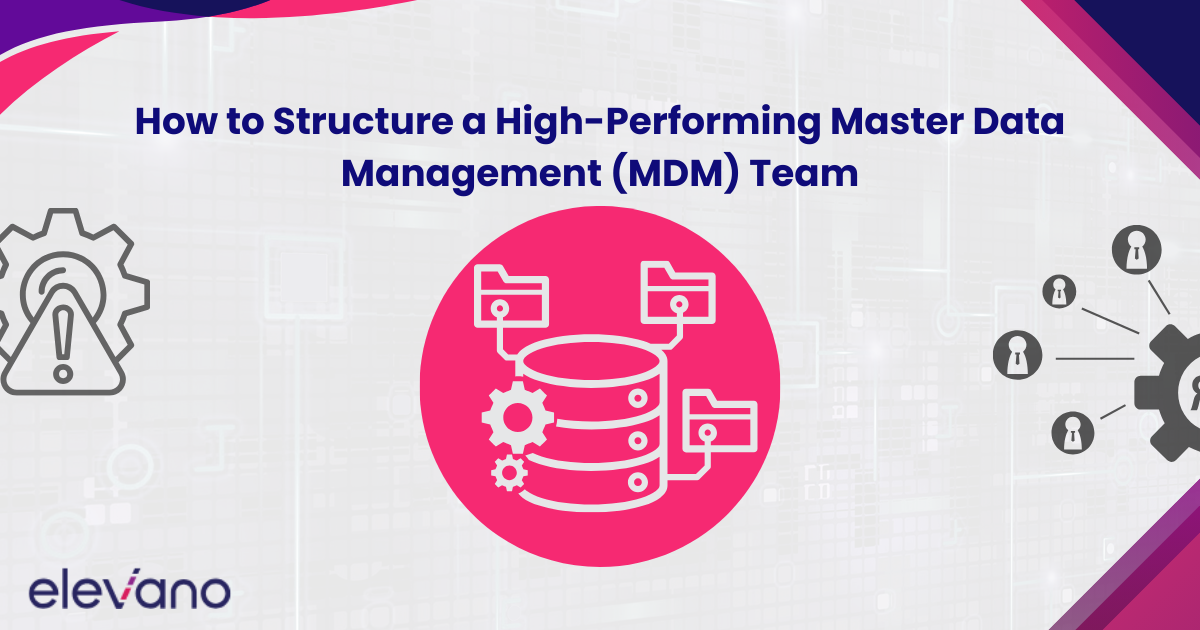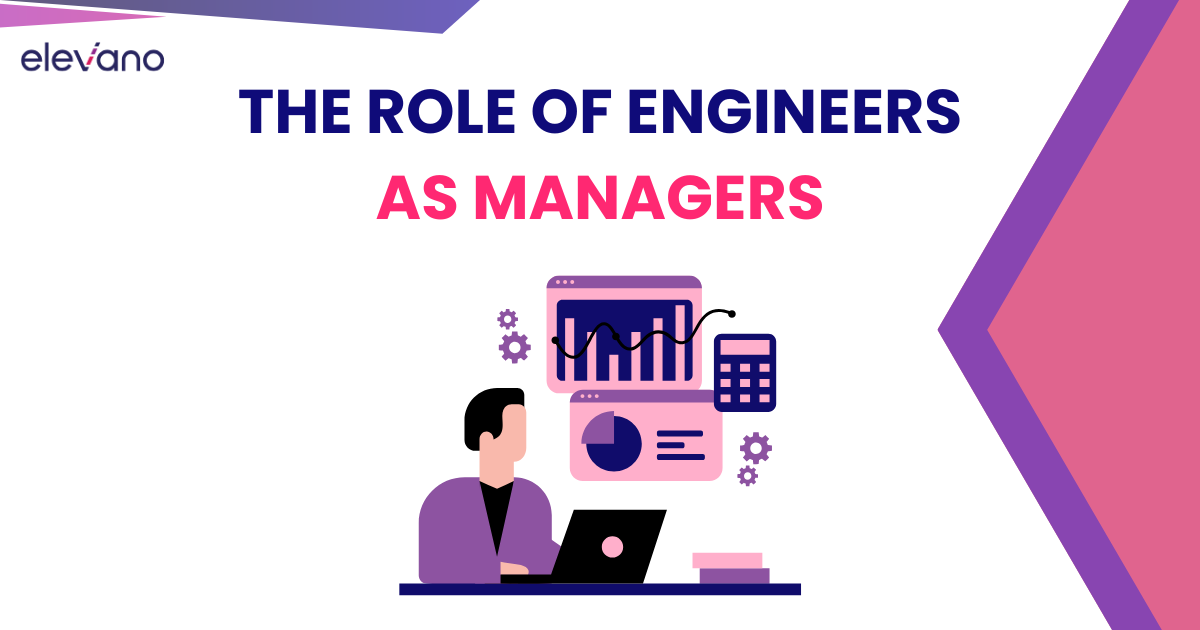In today’s fast-paced tech-driven world, businesses must continuously innovate while maintaining profitability. ACV Auctions, a real-time digital marketplace for automotive wholesale, has mastered this balance through a data-first approach, AI-driven insights, and a culture of experimentation. Unlike traditional auction platforms, ACV doesn’t just facilitate transactions—it leverages data, machine learning, and engineering excellence to create a seamless, efficient, and transparent ecosystem for buyers and sellers.
In a recent podcast, John Kohl, VP of Data Science & Analytics at ACV Auctions, shared how the company prioritizes innovation without losing sight of business goals. He breaks down:
- How ACV Auctions turns data into a competitive advantage
- Why structured innovation cycles help balance short-term execution with long-term vision
- The role of hackathons in driving groundbreaking solutions that make it into ACV’s product roadmap
- How engineering leaders can empower teams through context, flexibility, and ownership
So read on as we unpack key insights from the conversation—a practical guide for engineering leaders, product managers, and executives looking to bridge the gap between technical creativity and measurable business impact.
How ACV Auctions Uses Data and Technology to Drive Growth
According to John Kohl, VP of Data Science & Analytics at ACV Auctions, ACV isn’t just an auction platform—it’s a technology-driven company that uses data to improve trust, efficiency, and profitability in wholesale automotive transactions. Unlike traditional auctions that rely on manual processes and gut instinct, ACV captures and analyzes data at every step to drive smarter decision-making.
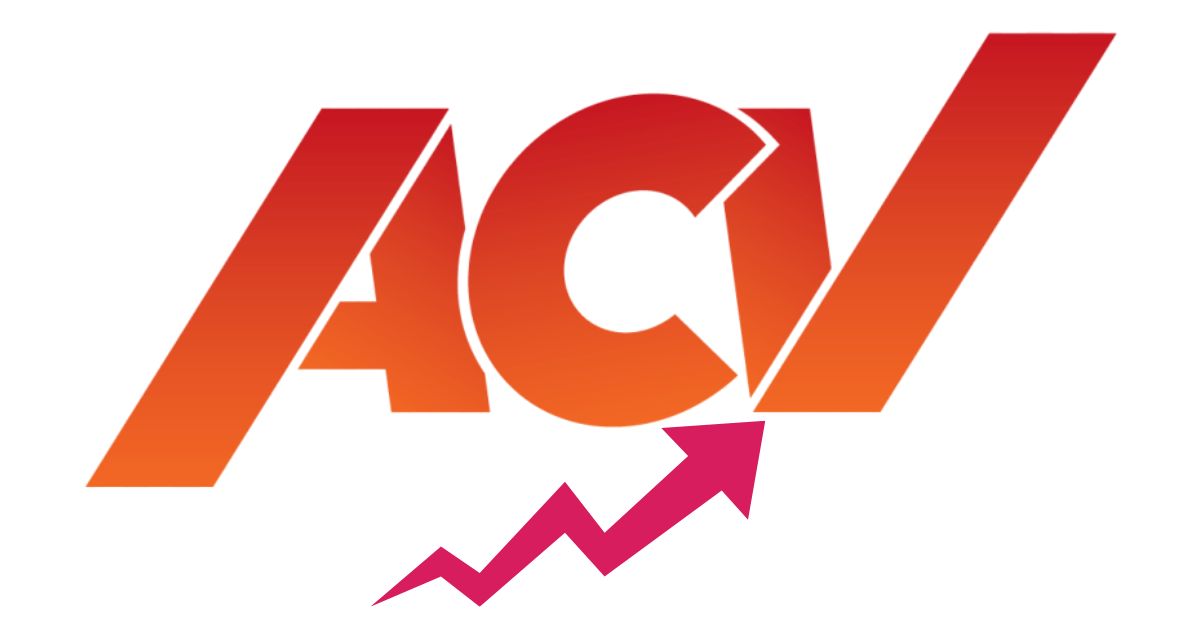
John explained that ACV doesn’t collect data just for the sake of it. Every piece of information serves a purpose, shaping both current transactions and future innovations. This approach creates a cycle of continuous learning, where each auction feeds valuable insights back into the system—helping optimize vehicle pricing, speed up transactions, and give buyers more confidence.
At the core of ACV’s strategy are two key principles:
Transparency Builds Trust – Buyers and sellers get real-time access to detailed vehicle condition reports, pricing trends, and past transactions, reducing uncertainty and making auctions more predictable.
Data Drives Smarter Decisions – Instead of relying on guesswork, ACV uses historical data, AI-powered predictions, and customer insights to optimize pricing, bidding, and overall marketplace efficiency.
By embedding data-driven intelligence into every transaction, ACV isn’t just running auctions—it’s redefining how wholesale vehicles are bought and sold.
The Role of AI and Machine Learning in ACV’s Business Model
John Kohl, VP of Data Science & Analytics at ACV Auctions, also shared that AI and machine learning are embedded into ACV’s platform, powering everything from pricing optimization to vehicle inspections. With thousands of cars listed and sold daily, relying on manual processes simply isn’t scalable—this is where AI steps in to increase speed, accuracy, and efficiency.
Here’s how ACV leverages AI to enhance its marketplace, as John explained:
AI-Powered Pricing Models – ACV analyzes historical sales, market trends, and vehicle attributes to recommend fair, competitive prices for both buyers and sellers.
Automated Vehicle Inspections – Machine learning detects inconsistencies in vehicle conditions, reducing human error and ensuring more accurate assessments.
Smarter Buyer Recommendations – AI analyzes past purchases to suggest vehicles that match a buyer’s preferences, helping them find the right inventory faster.
John emphasized that AI at ACV isn’t just about automation—it’s about smarter decisions. Every sale, bid, and user interaction feeds into machine-learning models, constantly refining the platform for better accuracy and efficiency. One standout example is ACV’s AI-driven title processing system, which started as a hackathon project. What began as an experiment is now a fully integrated tool that reduces paperwork errors, speeds up processing, and improves accuracy—a testament to how innovation at ACV translates into real business impact.
Balancing Innovation with Business Goals at ACV
Innovation is exciting, but at ACV Auctions, it’s only valuable if it drives real business impact. According to John Kohl, the company takes a pragmatic approach to innovation, ensuring that every new idea aligns with profitability, efficiency, and customer value.

The challenge? Balancing experimentation with immediate business needs. ACV ensures innovation is ROI-driven, prioritizing ideas that enhance operations and deliver measurable results.
John emphasized three critical questions ACV asks before pursuing an innovation:
Does it improve efficiency or reduce costs? – If a new technology streamlines operations or lowers expenses, it’s a strong candidate for investment.
Will it drive revenue growth? – Features that increase transaction volume, boost customer retention, or create new revenue streams get priority.
Is it scalable and sustainable? – ACV ensures that any new solution can be maintained, expanded, and integrated into existing workflows without disrupting the core business.
By tying engineering innovation directly to measurable business impact, ACV avoids wasted efforts on experimental ideas that don’t translate into real-world value.
A Three-Step Approach to Sustainable Innovation
Rather than chasing trends, ACV follows a structured three-step process to turn ideas into practical solutions.
1️⃣ R&D & Experimentation – Engineers and data teams explore new technologies, test ideas, and validate concepts before they become business priorities. John highlighted hackathons as a key driver, giving teams the freedom to experiment without immediate pressure to deliver.
2️⃣ Building Scalable Solutions – Promising ideas move beyond experimentation and evolve into platform-level enhancements that benefit multiple areas of the business. This ensures innovation strengthens ACV’s overall technology infrastructure, not just a single use case.
3️⃣ Product Integration & ROI – Only proven innovations make it into ACV’s roadmap, ensuring they deliver real value. Whether through efficiency gains, new features, or customer satisfaction, every initiative must contribute to business growth and profitability.
By keeping innovation tightly aligned with ROI, ACV ensures that its engineers aren’t just building for the future—they’re actively shaping the company’s growth and success.
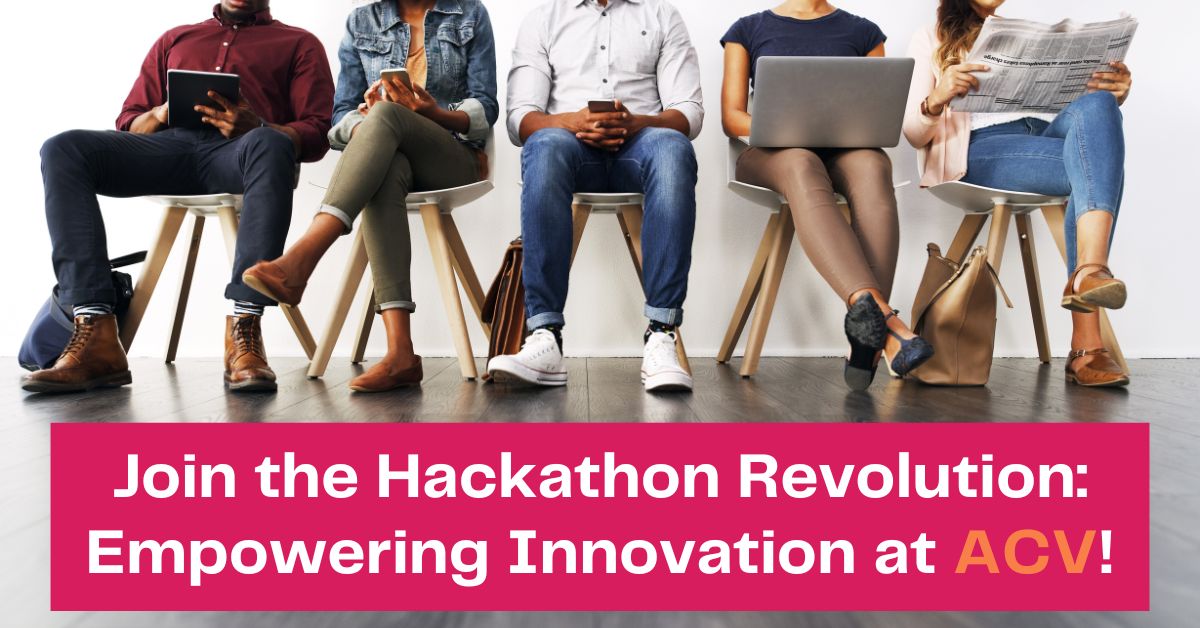
Hackathons at ACV: How Internal Innovation Transforms the Business
Inside ACV’s Hackathon Culture
Innovation at ACV Auctions isn’t confined to long-term roadmaps—it happens in fast-paced hackathons where engineers and data teams push boundaries. John Kohl shared that ACV’s biannual hackathons fuel creativity, allowing teams to experiment with bold ideas and emerging technologies. Unlike traditional corporate innovation programs, these hackathons aren’t about executive approval—peers judge the projects.
Teams pitch ideas, build prototypes in days, and vote on the best solutions, ensuring recognition comes from those who truly understand the impact. John emphasized the value of this peer-driven approach:
“We don’t expect every hackathon project to become a product, but we give teams the space to try, fail, and learn. Some of our best business solutions started as rough ideas in these sessions.”
By embedding hackathons into its culture, ACV empowers engineers to think beyond daily tasks and explore innovations that could redefine the company’s future.
Turning Hackathon Ideas into Real Business Solutions
A great hackathon project is worthless if it never leaves the whiteboard. At ACV, innovation isn’t just about ideation—it’s about execution. Winning projects don’t just receive recognition; they get a clear path to production if they align with business goals.
To ensure that hackathon innovations become tangible business improvements, ACV follows a structured process:
Idea Exploration – Teams identify pain points, propose solutions, and build functional prototypes.
Peer Recognition – The most promising ideas are selected based on creativity, impact, and feasibility.
Business Review – Leaders assess how the idea fits into ACV’s long-term strategy.
Development & Scaling – If viable, the project gets resources for further development and integration.
This structured approach ensures that hackathons aren’t just a playground for experimentation—they’re a pipeline for real business advancements that drive efficiency, save time, and create measurable ROI.
Creating a Culture of Experimentation and Continuous Learning
One of the biggest challenges for engineering teams is staying ahead of rapid technological advancements. ACV solves this by embedding a culture of continuous learning—and hackathons play a major role in this.
John emphasized that allowing engineers to explore new technologies (such as AI, machine learning, and automation) leads to breakthroughs that might not emerge in a traditional work environment.
“If you give people the right context and space, they’ll surprise you with what they build. Some of our best innovations didn’t come from executive planning—they came from engineers experimenting with what’s possible.”
At ACV, hackathons are about empowering engineers to take ownership, learn new skills, and think like entrepreneurs. The company also ensures that innovation isn’t limited to hackathons by supporting:
Mentorship & Knowledge Sharing – Experienced engineers guide newer team members in exploring emerging technologies.
Tech Talks & Summits – Regular events where teams showcase what they’ve built and share insights on cutting-edge tools and techniques.
Cross-Functional Collaboration – Encouraging engineers to work closely with product managers and business leaders to understand how technology drives revenue.
John made it clear that empowered engineers drive long-term business success. ACV’s commitment to context, flexibility, and structured experimentation creates a work environment where innovation isn’t just encouraged—it’s expected.
Upskilling Engineers to Keep Up with AI and Emerging Tech
Technology moves fast—what’s cutting-edge today can be outdated tomorrow. For engineering teams, staying relevant means constantly learning, experimenting, and adapting isn’t optional—it’s essential.
John Kohl, emphasized that engineers need more than just coding skills to thrive in a data-driven company. Understanding AI, machine learning, and predictive analytics is now as important as knowing how to build software.
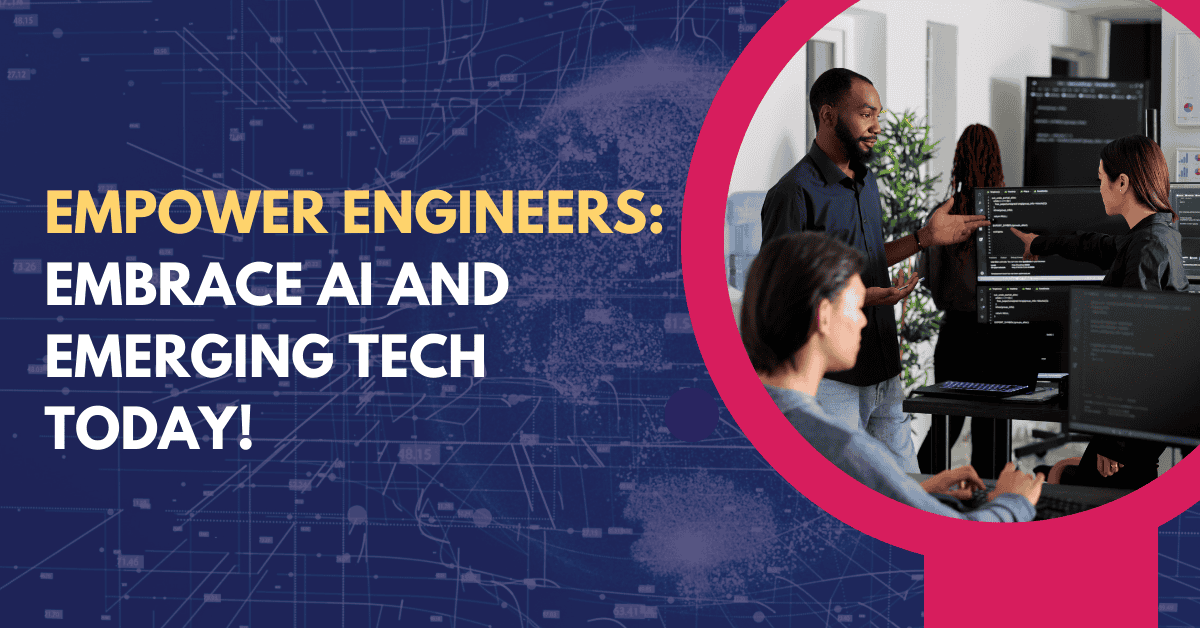
“The best engineers aren’t just great at execution—they’re curious, adaptable, and willing to explore new technologies that can change the business.”
But keeping teams updated on the latest advancements can’t just be left to individual motivation. ACV actively invests in structured learning opportunities that allow engineers to grow while delivering impact in their roles.
ACV’s Strategies for Upskilling and Talent Development
Keeping engineering teams sharp requires a mix of hands-on learning, mentorship, and access to the latest industry insights. ACV takes a practical, business-driven approach to upskilling, ensuring that every learning opportunity directly translates into value for both employees and the company.
Here’s how ACV ensures its engineers stay at the forefront of technology:
Hackathons as Hands-On Learning – Engineers use hackathons to explore AI, automation, and data-driven solutions in real-world scenarios, testing emerging tech without business pressure.
Mentorship & Knowledge Sharing – Senior engineers guide newer team members through AI, cloud infrastructure, and analytics, while regular tech talks ensure insights are shared across teams.
Collaboration Beyond Engineering – Teams work with data scientists, product managers, and analysts, helping engineers see the business impact of their technology decisions.
Encouraging Self-Learning – ACV supports independent learning with access to online courses, research papers, and industry events, keeping engineers ahead of AI and automation trends.
Fail Fast, Learn Faster – Engineers are encouraged to experiment, iterate, and take risks without fear of failure, fostering a culture of bold thinking and rapid innovation.
By aligning upskilling with real business needs, ACV ensures that engineers don’t just learn for the sake of learning—they gain practical skills that drive innovation, efficiency, and growth.
Great Engineering Teams Don’t Just Build—They Drive Business Growth
At ACV Auctions, engineering isn’t just about writing code—it’s about solving real business challenges. John Kohl, VP of Data Science & Analytics, emphasized that the most effective engineering teams aren’t just executors—they’re decision-makers, innovators, and strategic drivers of growth. ACV’s leadership philosophy is simple: Give engineers context, freedom, and the right tools, and they’ll build solutions that move the business forward.
Here’s how ACV empowers its engineering teams to think bigger, innovate faster, and drive real impact:
Clarity Over Control – Engineers perform best when they understand the bigger picture. ACV leaders don’t just assign tasks—they provide real-time business insights, customer challenges, and market trends so teams can create solutions that deliver real impact.
Freedom to Experiment with Purpose – Innovation at ACV isn’t a side project—it’s part of the culture. Engineers explore AI models, automation, and data-driven solutions through hackathons and prototyping, allowing them to push boundaries while staying aligned with business goals.
Fast Feedback Loops for Continuous Improvement – Agile processes ensure engineers don’t wait for approvals. Regular check-ins help teams adapt, refine, and optimize solutions in real time without unnecessary roadblocks.
Ownership Through Data-Driven Decisions – Engineers don’t just build—they shape business outcomes. Real-time access to analytics, ROI metrics, and customer data ensures decisions are backed by insights, not assumptions.
Peer-Led Innovation, Not Just Executive Buy-In – The best ideas rise to the top based on merit, not hierarchy. Hackathon projects and engineering proposals are judged by peers, fostering a culture where impact matters more than titles.
Cross-Functional Collaboration That Drives Results – Engineers work side-by-side with data scientists, product managers, and business teams to ensure that technology isn’t just functional—it’s a revenue driver and customer success enabler.
Customer-Centric Engineering for Real-World Value – Engineers don’t just build what’s assigned—they understand how their work impacts customers. Direct exposure to user pain points ensures solutions are practical, intuitive, and high-impact.
Breaking Down Silos Between Engineering and Business – ACV ensures that engineers have a seat at the table. Business leaders actively engage with technical teams, making innovation a shared mission, not just a department initiative.
At ACV, engineers aren’t just developers—they’re business partners, problem solvers, and innovators. By combining context, flexibility, and collaboration, ACV turns engineering into a competitive advantage.
How Can Lessons from ACV Auctions Help Founders Like Sandeep Bhadra Overcome Challenges?
ACV Auctions offers valuable insights on overcoming founder hurdles, particularly in navigating operational challenges and market fluctuations. By sharing strategies for adaptability and resilience, founders can better position their startups for success. Learning from ACV Auctions’ journey equips entrepreneurs with the tools needed to thrive in a competitive landscape.
The Future of Innovation at ACV Auctions
At ACV Auctions, innovation isn’t just about keeping up—it’s about staying ahead. John Kohl explained that the company’s long-term success depends on continuously refining its technology, scaling data-driven insights, and making AI an integral part of decision-making. The goal isn’t just to build better tools—it’s to transform the way wholesale automotive transactions work.
Scaling Data-Driven Innovation for Competitive Advantage
Data has always been ACV’s strongest asset, but the challenge is using it more intelligently. John emphasized that the next phase of growth will focus on:
Expanding Predictive Analytics – By analyzing millions of transactions, ACV is fine-tuning its ability to predict vehicle values, market demand, and seller behavior more accurately. These insights will help buyers and sellers make better decisions in real time.
Enhancing AI-Powered Decision-Making – AI is already used for pricing, vehicle inspections, and recommendations. The next step is making AI more adaptive and responsive so it can proactively suggest the best strategies for sellers and help buyers discover ideal inventory faster.
Building a Smarter Marketplace – ACV is working toward a self-optimizing platform where machine learning continuously refines auction processes, reducing inefficiencies and maximizing profitability for users.
AI, Machine Learning, and the Next Phase of Growth
Artificial intelligence is no longer just a tool—it’s becoming the foundation of ACV’s marketplace. John highlighted key areas where AI will drive the next wave of growth:
Automated Buyer & Seller Matching – AI will analyze past transactions, bidding patterns, and market trends to connect the right vehicles with the right buyers faster.
More Accurate Vehicle Inspections – Machine learning will continue to enhance damage detection, fraud prevention, and condition assessments, reducing uncertainty in online vehicle purchases.
Smarter Inventory Recommendations – ACV’s AI will get better at predicting which vehicles dealers should stock based on regional demand, pricing trends, and historical sales performance.
John emphasized that the real power of AI isn’t just automation—it’s enabling better business decisions at scale. By embedding AI deeper into its processes, ACV will create a marketplace that learns, adapts, and improves over time.
Lessons for Engineering Leaders: Driving Innovation at Scale
For engineering leaders, ACV’s approach offers valuable takeaways on how to scale innovation without losing focus on business impact.
Balance Experimentation with Execution – Innovation is essential, but it must be aligned with business goals. ACV ensures that R&D efforts lead to measurable improvements in efficiency, revenue, or customer experience.
Use Data as the Foundation for Growth – Every engineering decision should be backed by data, whether it’s optimizing AI models, improving user experience, or refining backend processes.
Empower Teams to Solve Real Problems – ACV’s engineers don’t just write code—they help shape company strategy. Giving them context, flexibility, and ownership leads to smarter, high-impact solutions.
The future of innovation at ACV isn’t just about new technology—it’s about using data and AI to drive smarter, more efficient, and more profitable transactions.
Creating a Culture Where Innovation Thrives
Innovation isn’t a single event—it’s a mindset that must be woven into daily operations, leadership philosophy, and long-term strategy. At ACV Auctions, innovation isn’t just about technology; it’s about empowering engineers, leveraging data, and aligning creativity with business success.
John Kohl highlighted that sustainable innovation comes from a structured yet flexible approach—one that balances short-term execution with long-term growth opportunities. The key? Giving teams ownership, context, and the freedom to experiment, while keeping an eye on measurable impact.
Beyond Hackathons: A Blueprint for Ongoing Innovation
While ACV’s hackathons provide a structured way to explore new ideas, the company’s success comes from an ongoing commitment to learning and adaptation.
Technology is a tool, not the goal. AI, data science, and automation aren’t just used for innovation’s sake—they’re embedded in ACV’s business model to solve real problems and create efficiencies.
Upskilling isn’t optional. The best engineering teams don’t just react to change—they anticipate it. By continuously learning, engineers stay ahead of industry shifts and emerging technologies.
Leadership sets the tone. Innovation thrives when leaders provide clear vision, support risk-taking, and ensure alignment between technical initiatives and business strategy.
The Takeaway for Engineering Leaders
If there’s one lesson from ACV’s approach, it’s this: Innovation isn’t about chasing trends—it’s about creating a culture where the right ideas surface at the right time.
Companies looking to build this kind of environment should focus on:
✔ Encouraging engineers to think beyond their tasks and see the bigger picture.
✔ Balancing structured planning with room for creativity.
✔ Investing in data-driven decision-making to prioritize high-impact ideas.
The most innovative teams aren’t just building products—they’re shaping the future of the business.
“It’s not about a single breakthrough—it’s about setting up an environment where breakthroughs happen consistently,” John said.
So read on, because building a culture of continuous innovation isn’t just a competitive advantage—it’s the foundation of long-term success.


